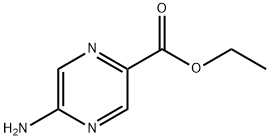Varnish is a transparent, hard, protective finish or film primarily used in woodworking, furniture, and artwork. It is made by dissolving natural resins, synthetic resins, and solvents, creating a glossy or satin finish that enhances the appearance of wood and provides protection against moisture, wear, and UV damage.
Related Derivative Questions:
1.How does varnish protect wood surfaces?
2.What are the differences between varnish, lacquer, and polyurethane?
What is varnish?
Related Products More >
-
- 108-80-5
- USD 50.0000
- 50kg
-
- 108-78-1
- USD 4.5000
- 25kg
-
- 4559-86-8
- USD 750.0000
- 170kg
-
- 77182-82-2
- equest For Quotation
-
- 70131-50-9
- equest For Quotation



 沪ICP备2021018848号-5
沪ICP备2021018848号-5

Varnish is a type of protective coating that is typically used to protect wood, artwork, or other surfaces. It is made by dissolving natural or synthetic resins in a solvent, and it can form a glossy or satin finish. Varnish serves both an aesthetic and functional purpose. It enhances the appearance of the wood, making it shine, while also providing protection from the elements such as moisture, UV rays, and physical wear. This makes varnish a popular choice for furniture, wooden floors, and even certain art pieces.
When applied, varnish penetrates the wood surface and hardens, creating a durable layer that shields the material from scratches, stains, and moisture damage. Over time, varnish can also enhance the natural grain of the wood, providing a deep, rich appearance.
1.How does varnish protect wood surfaces?
Varnish protects wood surfaces by creating a barrier that prevents water and moisture from penetrating the wood, which can cause warping, rotting, or mold growth. The protective layer also shields the wood from UV radiation, which can degrade the material and cause fading or discoloration. Additionally, varnish serves as a defense against dirt and physical abrasions that could damage the surface over time. By offering these protective qualities, varnish can prolong the life of wood products, especially in high-use or outdoor environments.
For example, when varnish is used on wooden boats or furniture placed in outdoor environments, it helps prevent water absorption, which is critical to preventing long-term damage. In wooden floors, varnish protects against scratches caused by foot traffic or furniture movement, maintaining both the appearance and the integrity of the wood.
2.What are the differences between varnish, lacquer, and polyurethane?
While varnish, lacquer, and polyurethane all provide a protective finish, they differ in terms of composition, application methods, and final appearance.
Varnish is typically a more natural finish made from resins that are dissolved in a solvent. It is often applied in multiple layers, with each layer needing time to cure. Varnish usually results in a soft, natural-looking shine that enhances the wood's grain, though it may be more susceptible to scratches compared to other finishes.
Lacquer, on the other hand, is a fast-drying finish that creates a high-gloss surface. It is often preferred for furniture that requires a shiny, polished look. Lacquer provides a harder finish than varnish but may be less durable in terms of UV resistance.
Polyurethane is a synthetic finish known for its high durability. It forms a hard, water-resistant layer, which makes it an ideal choice for high-traffic areas or surfaces exposed to moisture. Polyurethane is generally more resistant to heat, stains, and chemicals compared to varnish.
What to consider when using varnish?
When applying varnish, there are a few important considerations to ensure the best results.
Surface preparation: The surface must be clean, dry, and smooth to ensure proper adhesion of the varnish. Sanding the wood before application can help achieve an even and smooth finish.
Application technique: Varnish should be applied in thin, even coats to avoid drips or streaks. Multiple coats are often required, with proper drying time between each application.
Ventilation: When applying varnish, ensure proper ventilation to allow the fumes to dissipate. Some varnishes release strong odors or VOCs (volatile organic compounds) that can be harmful in poorly ventilated areas.
Drying time: Varnish takes time to cure and fully harden, so be patient and avoid using or placing heavy items on the surface until it has properly dried. This can take anywhere from several hours to a few days, depending on the varnish type.
Composition: Varnishes are typically composed of resins, solvents, and sometimes additives. The resins provide the film-forming properties and determine the hardness, durability, and gloss of the varnish. Common resins used include acrylics, polyurethanes, alkyds, and epoxies. Solvents are used to dissolve the resins and adjust the viscosity of the varnish, making it easier to apply. Additives may be included to improve properties such as drying time, UV resistance, and flexibility.
Properties: Varnish offers several important properties. It provides a high level of protection against moisture, chemicals, UV radiation, and physical damage, helping to prolong the life of the underlying surface. It also enhances the appearance of the object by providing a glossy, smooth finish that can highlight the natural beauty of materials like wood or add a sleek look to metal or other substrates.
Applications: Varnish has a wide range of applications. In woodworking, it is used to finish furniture, floors, and decorative wood items, protecting the wood and giving it an attractive sheen. In the automotive industry, it is used as a topcoat to protect the paint and provide a glossy finish. It is also used in the coating of musical instruments, artworks, and various metal and plastic products to improve their appearance and durability.